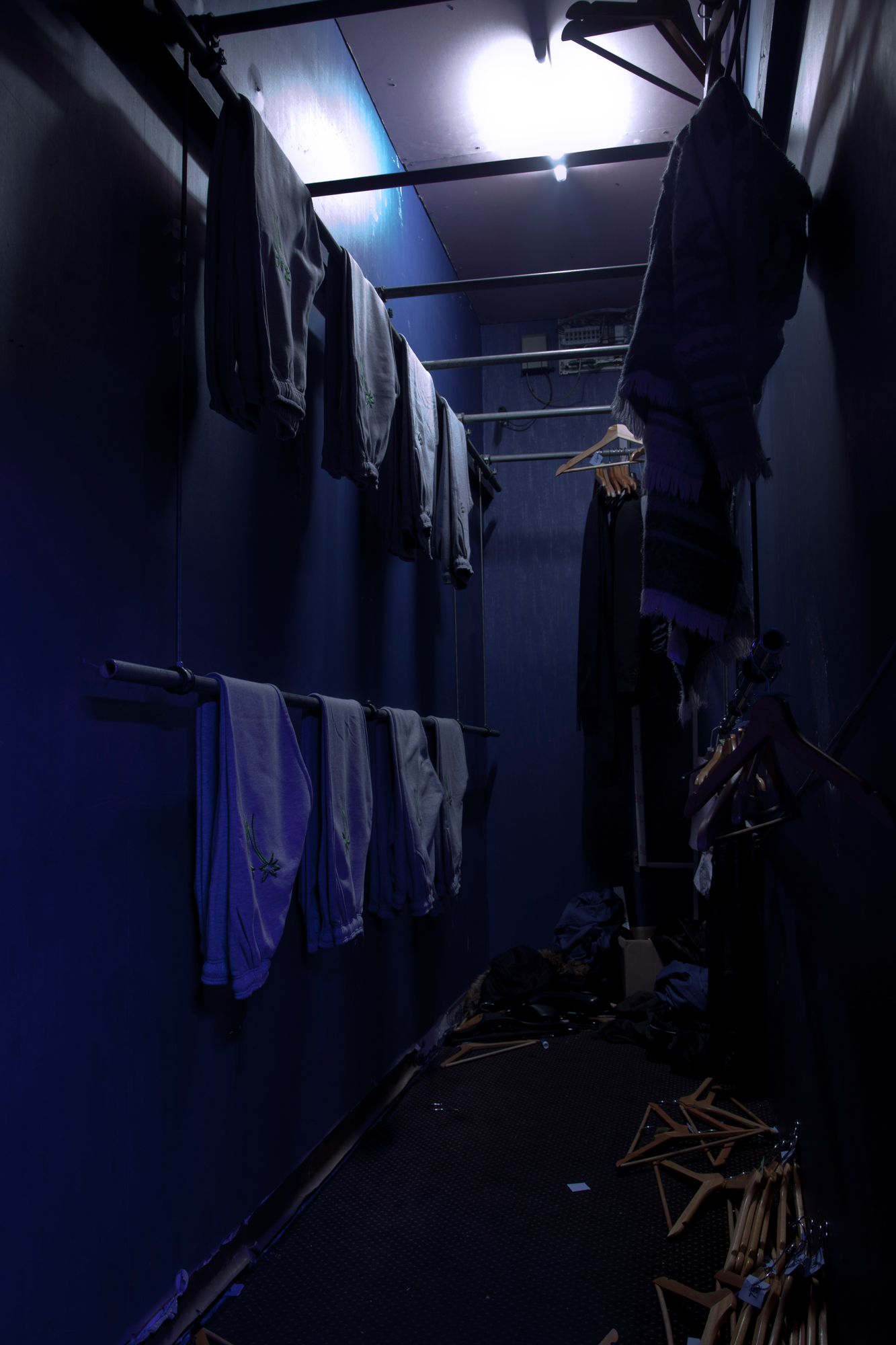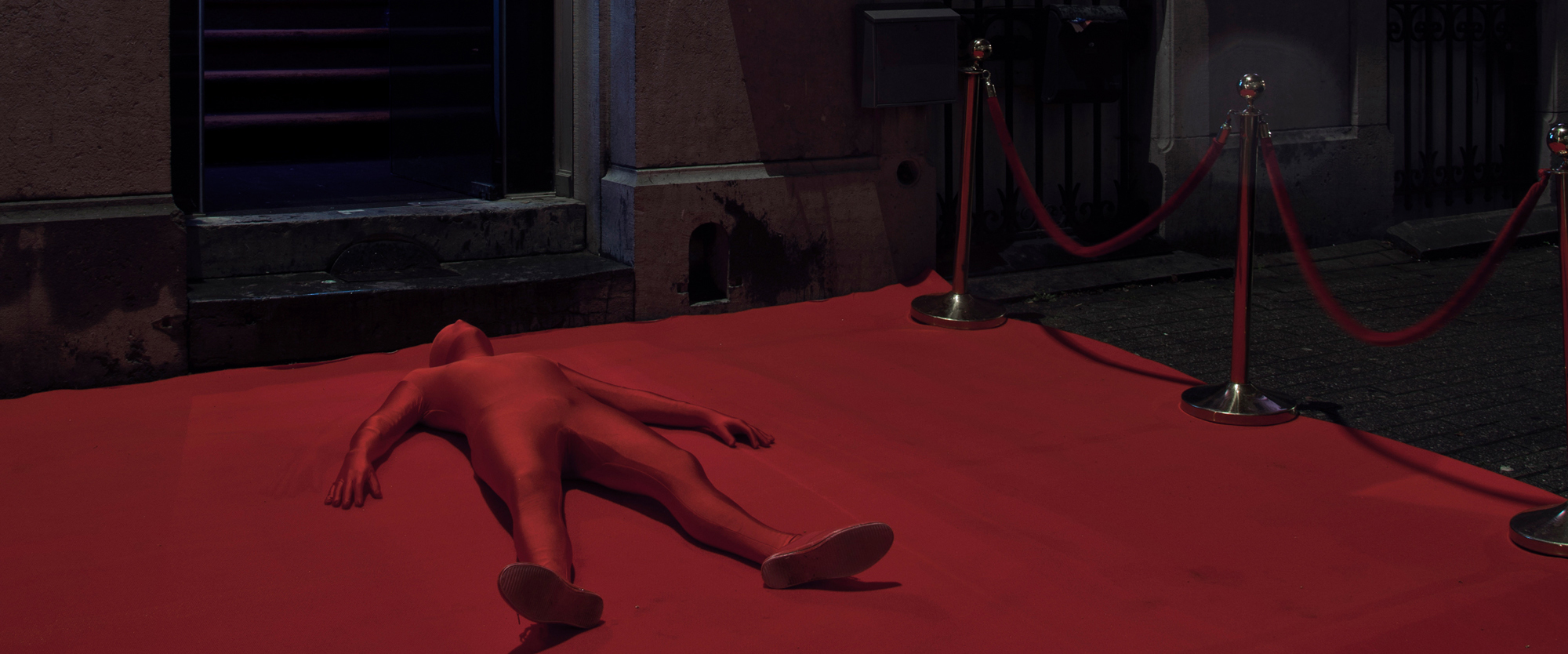Interview with FILIP GILISSEN and ELKE LENTE, initiators of COSMOPOLITANISSIMO @ CLUB JIMMY HOO
by Caroline Dumalin
The group exhibition COSMOPOLITANISSIMO took place at nightclub Jimmy Hoo in Brussels, including contributions by 25 artists. Organized by artist FILIP GILISSEN together with ELKE LENTE and DAVIDS POUFONG, the show lasted 12 hours from 9pm to 9am and was accompanied by dj-sets and performances. In this conversation, the organizers reflect on the event, its decor and their ambitions.
Filip, Elke, early December 2017 you invited me to Cosmopolitanissimo. What does this title mean to you?
Perhaps Cosmopolitanissimo was best felt in 2003 at the Just Cavalli fashion show in Milan. But Cosmopolitanissimo is also a dinner with antiquarians and football personalities discussing eco fur or the monumental Jeff Koons sculpture donation in front of the Palais de Tokyo, while being spotted by an official photographer with an extra-long zoom lens. It’s a lifelong supply of Acqua di Gio. It’s a weekly scheduled manicure at a hair salon & gallery boutique. It’s wearing matching emerald and pink rings and cufflinks. It’s carrying a Montblanc William Shakespeare Special Edition Ballpoint Pen, while using a regular pen for daily use. It’s a Carabiniere that is also a paint dripper. It’s ordering shots of Blue Curaçao for strangers while smoking Sobranie Cocktail. It’s the nineties Berlusconi state of mind in times of natural wine, T-shirt activism and urban greenhouses. Cosmopolitanissimo asks: what was provincial yesterday? What is authentic now? What will be cosmopolitan tomorrow?
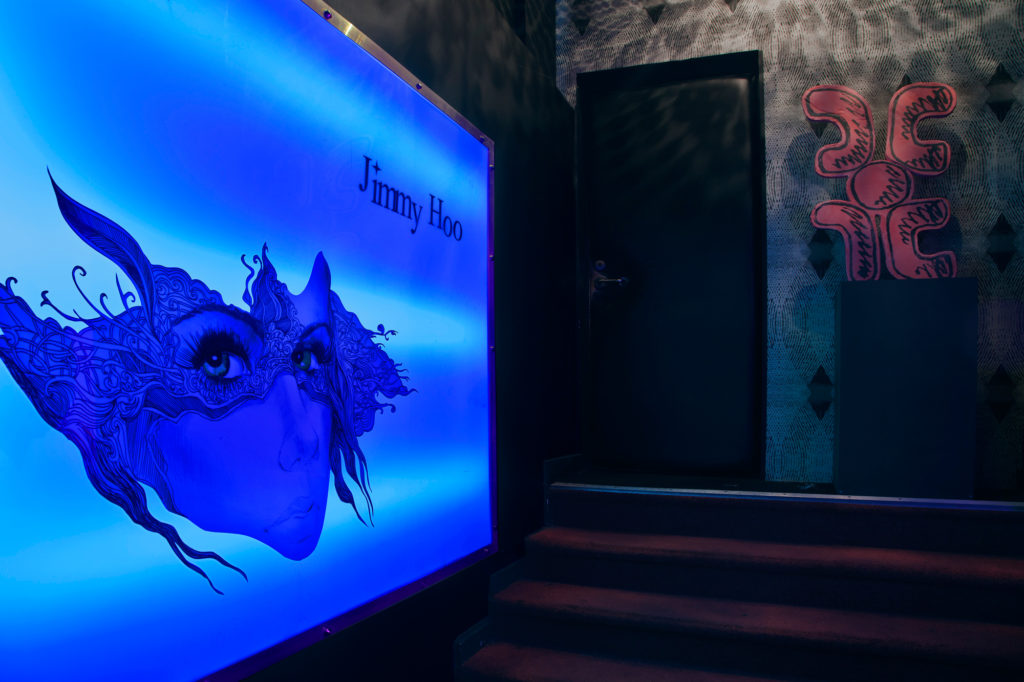
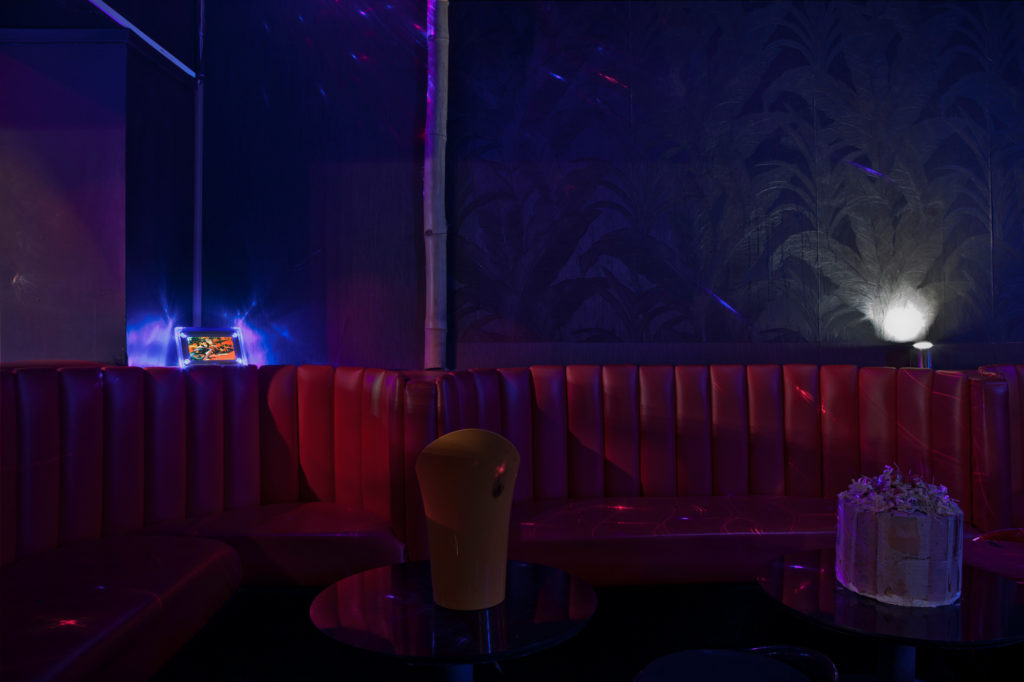
At the time you called it ‘a one night exhibition’. Was it actually about showing art?
Making an exhibition and collaborating with people we felt close to was a very important motivation. We had planned for the exhibition to be able to be experienced in different ways. But rather than reaching people from the ‘good taste and design culture’, we wanted to reconnect with a freer atmosphere that would allow for other kinds of relationships and codes, which, in turn, could potentially be transgressed. That is why the event was hosted by Club Jimmy Hoo on Facebook. The email invitations and guest lists were organized via a Gmail-account named Fashion District Maasmechelen Village and there was exceptionally no entrance fee. The house-style of Cosmopolitanissimo is pathetic but also cute. We wanted to orchestrate that ‘useful’ moment where people have to decide whether an invitation is worth neglecting or not.
Why did you choose Jimmy Hoo as a location?
Jimmy Hoo brands itself as the ‘most cosmopolitan’ club of the capital of Europe, conveniently located in an uptown neighbourhood of the city (Ixelles). According to jimmy-hoo.com, it’s the ‘official’ go-to venue for any nightlife enthusiast, famous for its in-house restaurant, its inviting management, and its rotating line-up of crowdpleasing DJs. As children of suburbia, we immediately fell in love with Jimmy’s promise. To be able to enter a cosmopolitan place is remarkable; in a world where the design of a patterned ceramic vase travels in less than a few months’ time from an Abbot Kinney Boulevard storefront to H&M Home, on to Target and ultimately to a 99-cent store. An edition of Cosmopolitanissimo in a club like Jimmy Hoo perhaps allows us to visualize the fear of provinciality and fear of disappointment that comes with climbing any social ladder.
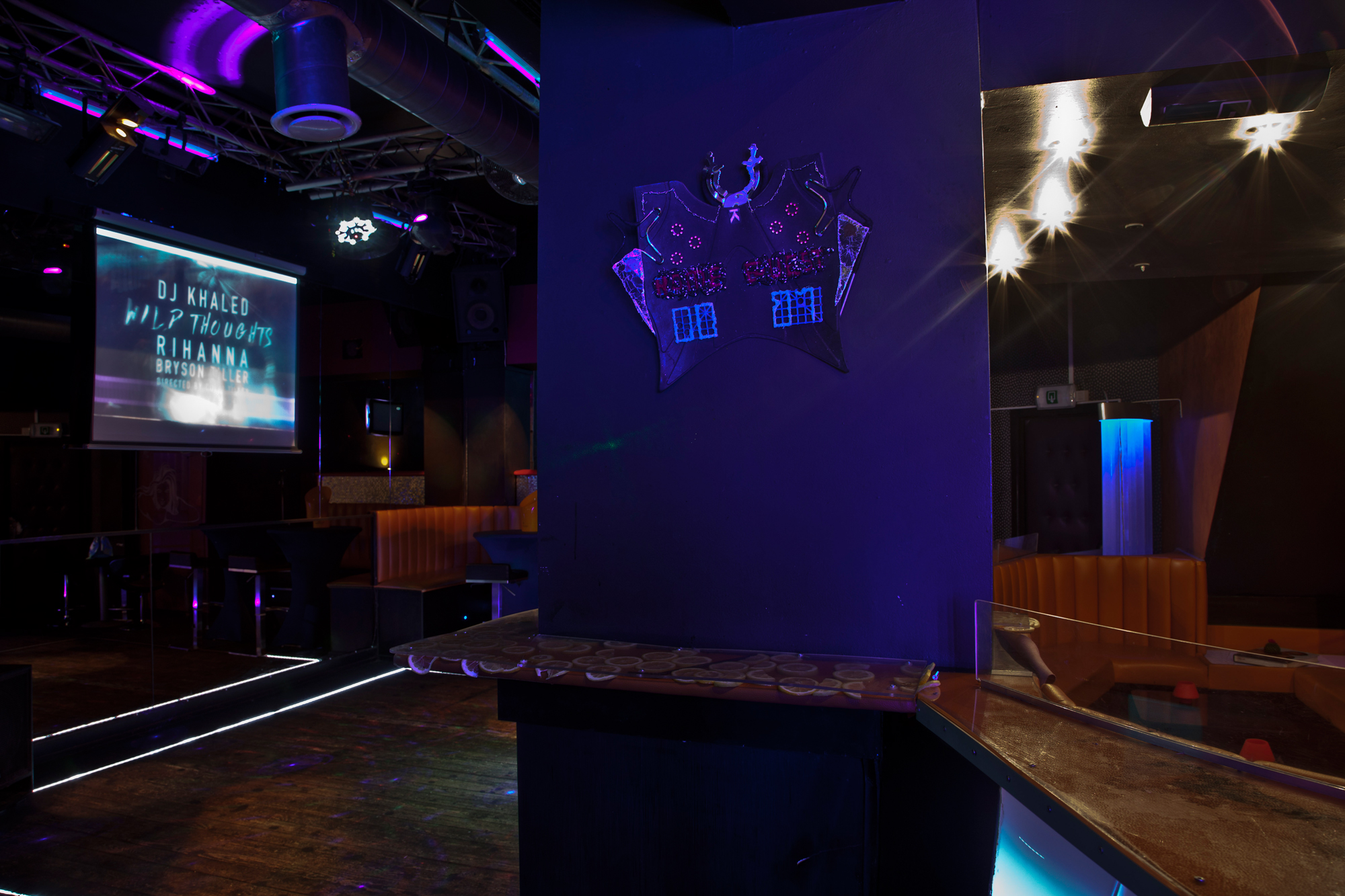
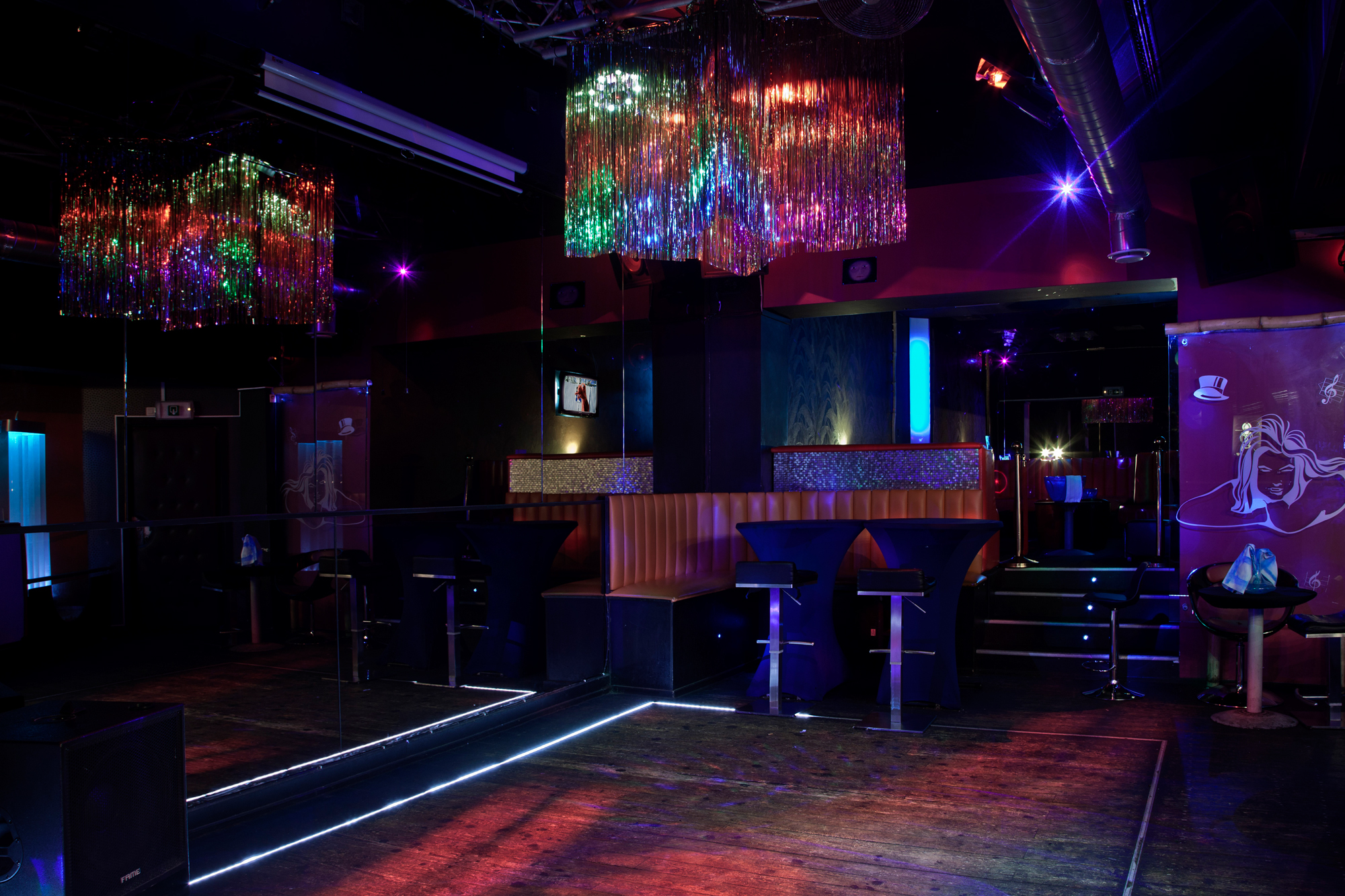
You have been going to the club for years. At what point did the idea of Cosmopolitanissimo materialize?
The invitation to do an exhibition came from the owner, Davids Poufong, who approached us one night in 2013, when we were going almost on a weekly basis to Jimmy Hoo. Since then, Elke and I regularly invited friends to the club because it’s a magical place to be. But we also wanted to discover how the place functioned, and so we visited often and tried to slowly establish a relationship without hierarchy. Davids the owner, Serge the manager, Katia the VIP manager, Lisette the toilet lady, Marlies the cook, Christian the restaurant waiter and Sandrine the restaurant manager were very kind and professional people, but also ‘woke’ and didn’t like to smoke. In September, we tried to go from bar talk to daytime meetings and they were relieved we weren’t trying to be ‘the spoiled idler in the garden of knowledge’.
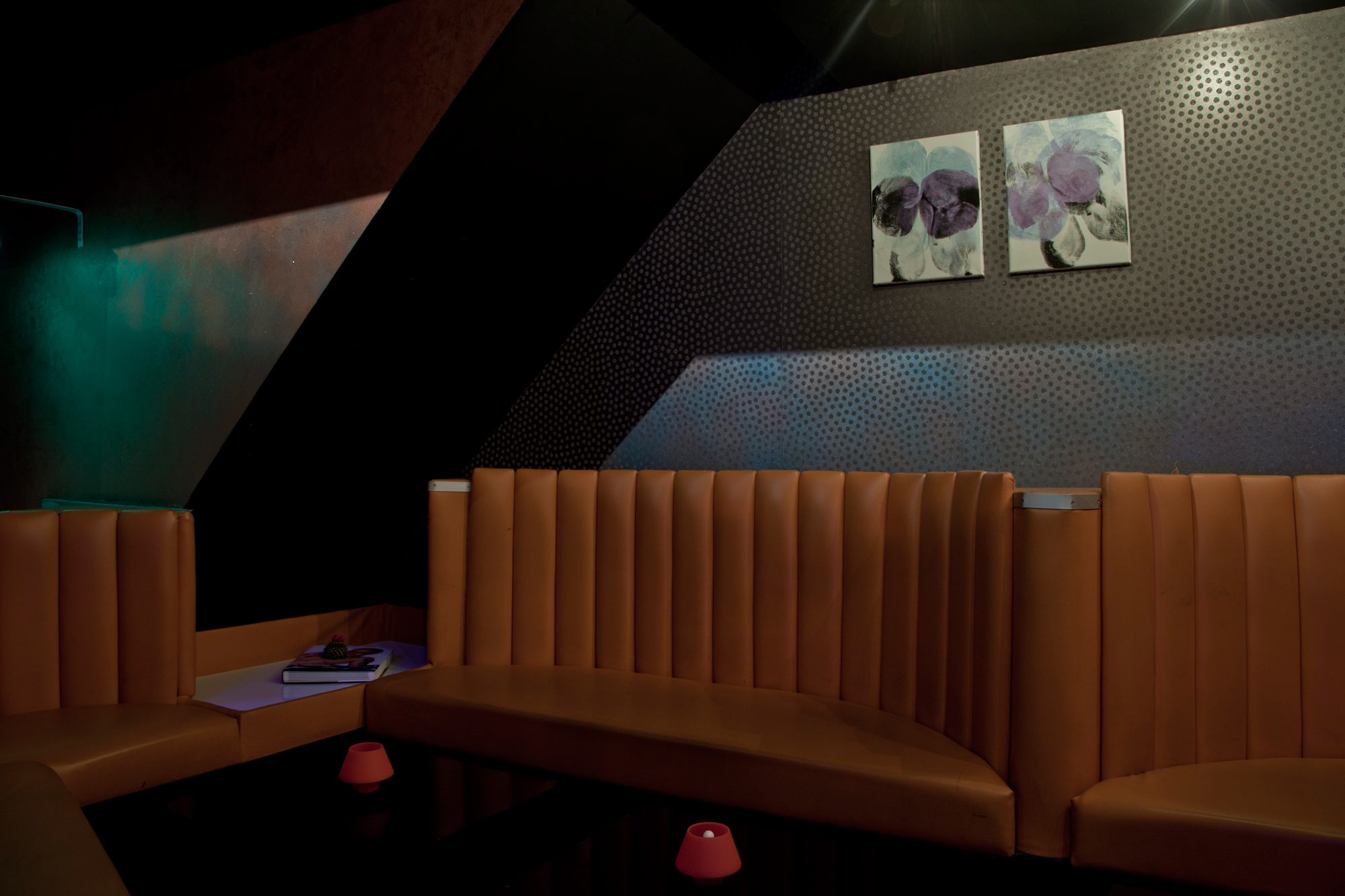
You described the club to me as: ‘a monument to the end of the oil empire that reminds us of a time that precedes upcycle, vintage and healthy.’ Can you elaborate?
The interior of Jimmy Hoo is dominant and reflects a time that is never coming back. We wanted to react to this without being nostalgic. We wanted to make a selection of works that had the potential to be mistaken for the club’s decoration. And we were very happy with the reactions from the invited artists. There were no provocative proposals but rather subtle and often manipulative ones. But we didn’t want to bother anyone with arty-looking objects. We wanted to address the expectation of a grand artistic gesture, the expectation of a certain level of mannerism and drama. Taking this idea very literally, Puppies Puppies presented a performance of a person dressed in a red face covering unitard with red shoes lying on the red carpet outside the entrance. There was only one proper sculpture on a plinth in the show. It was Mick Peter’s Folded and Puffed Sculpture in the lobby of the club. The largest contributions were situated along the periphery of the club. We were very satisfied with Lulou Margarine’s little toilet solo with prints of the ‘time of the day’ and Life Sport’s sweatpants shop in the cloakroom or Bruno Zhu’s hallway stickers of Story Four: Shelves (cosy celestial). Inside the club there were table decorations by Josip Novosel, a Mario Zabatti brick pasta pie in the VIP section and a collection of smaller objects on the blue LED mirror shelves behind the bar.
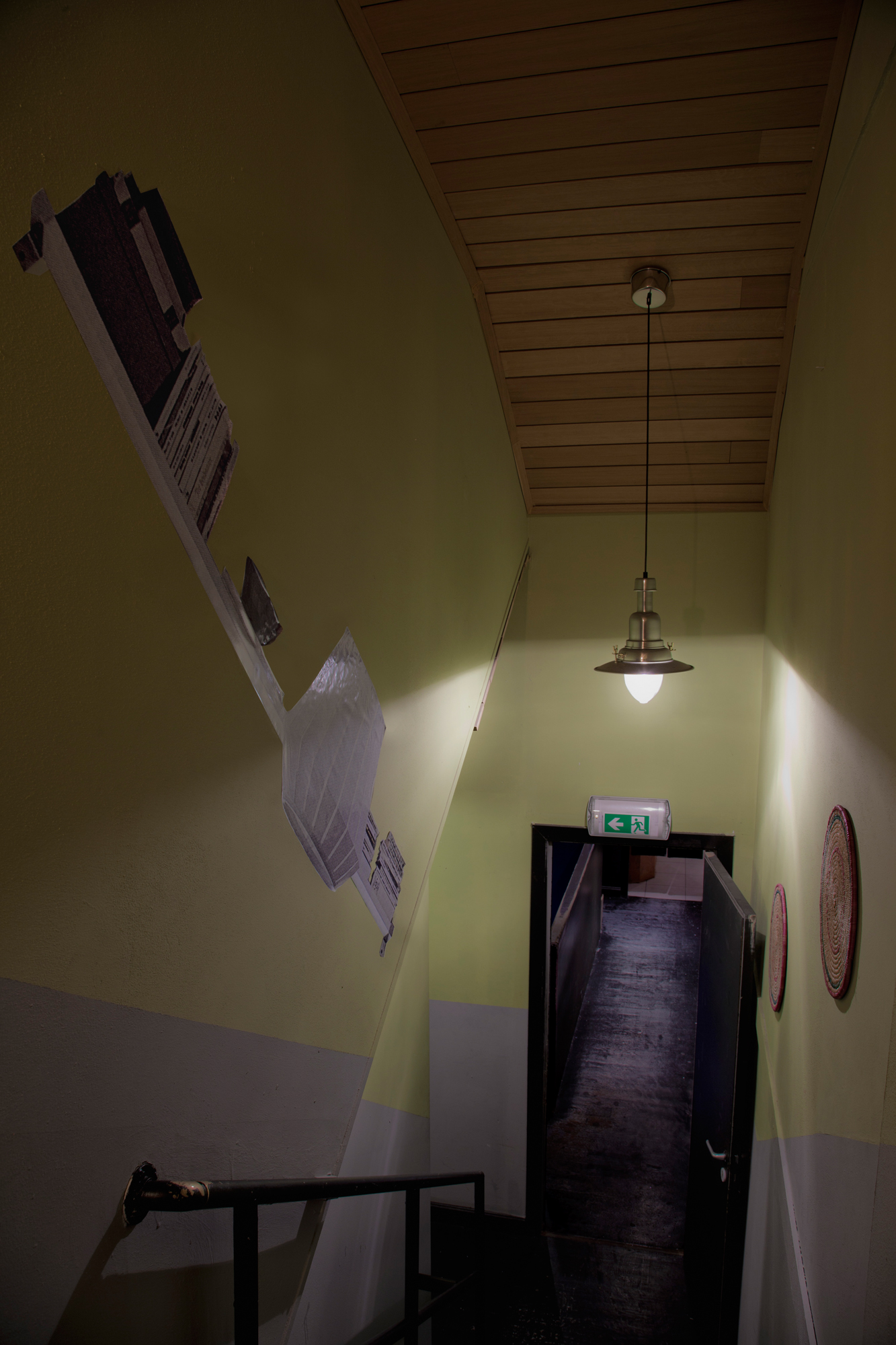
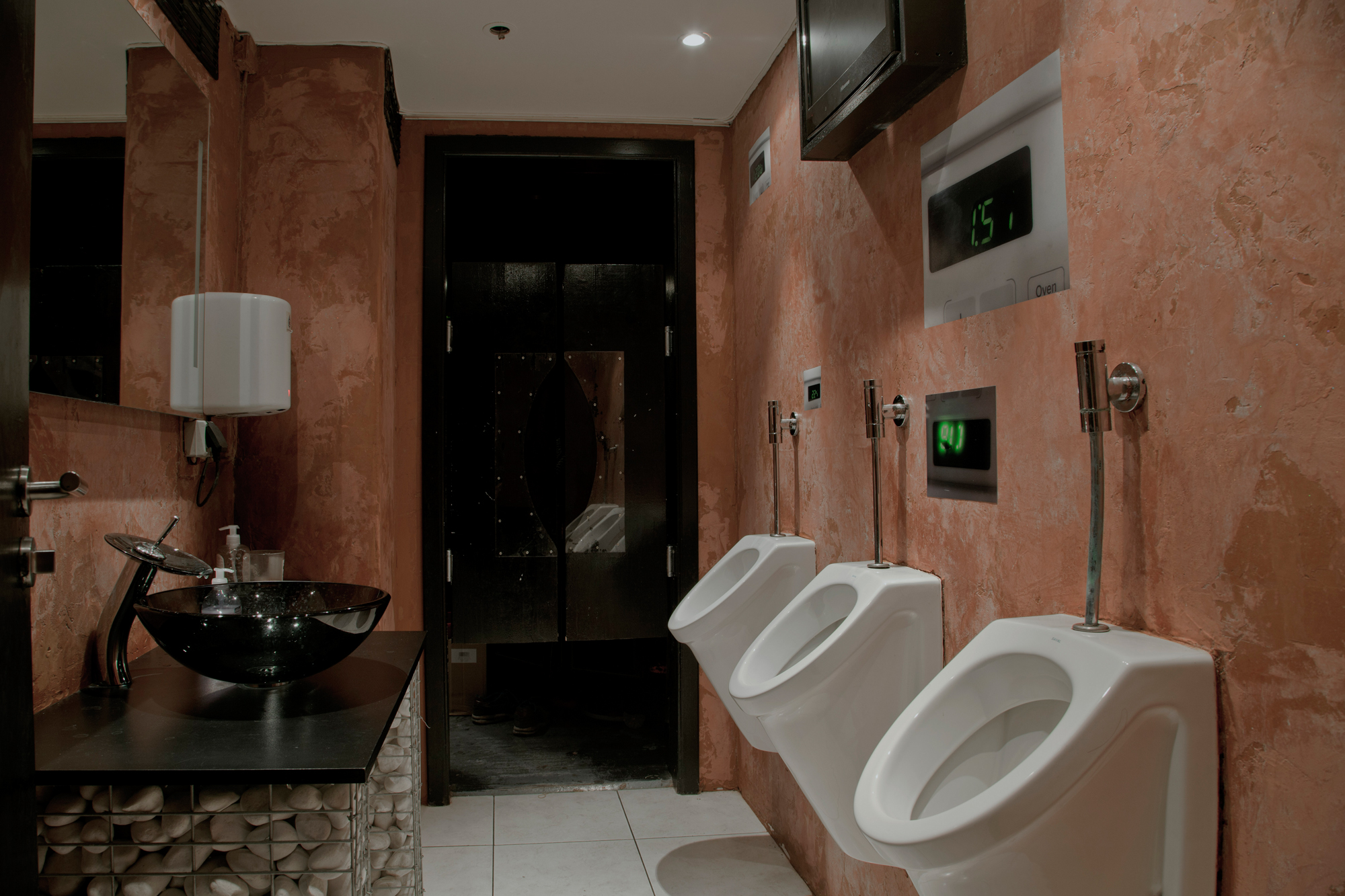
You described the club to me as: ‘a monument to the end of the oil empire that reminds us of a time that precedes upcycle, vintage and healthy.’ Can you elaborate? What did you look for when selecting the artists?
We feel connected to artists practices that raise questions about the value of authenticity in relation to progress and art’s social role. 7 out of 25 artists in the exhibition operated anonymously under an alias, like for example Jean-Gwénolé Fleuriot, Mario Zabatti, Lulou Margarine and for example the artists’ collectives Harmonie Grunge or Life Sport. Other contributors presented a collaborative piece, such as the Las Vegas portrait photo simulation by Fatima Al Qadiri & Khalid Al Gharabally or the infamous Terry Richardson nude book-as-a-flower pot by Brad Troemel and Joshua Citerella under the name Ultra Violet Production House. But the majority of contributions were of individual authorship, such as those by Steinar Haga Kristensen, Amalia Ulman or Cédric Fargues, whose practice demonstrates a symbolic sacrifice.
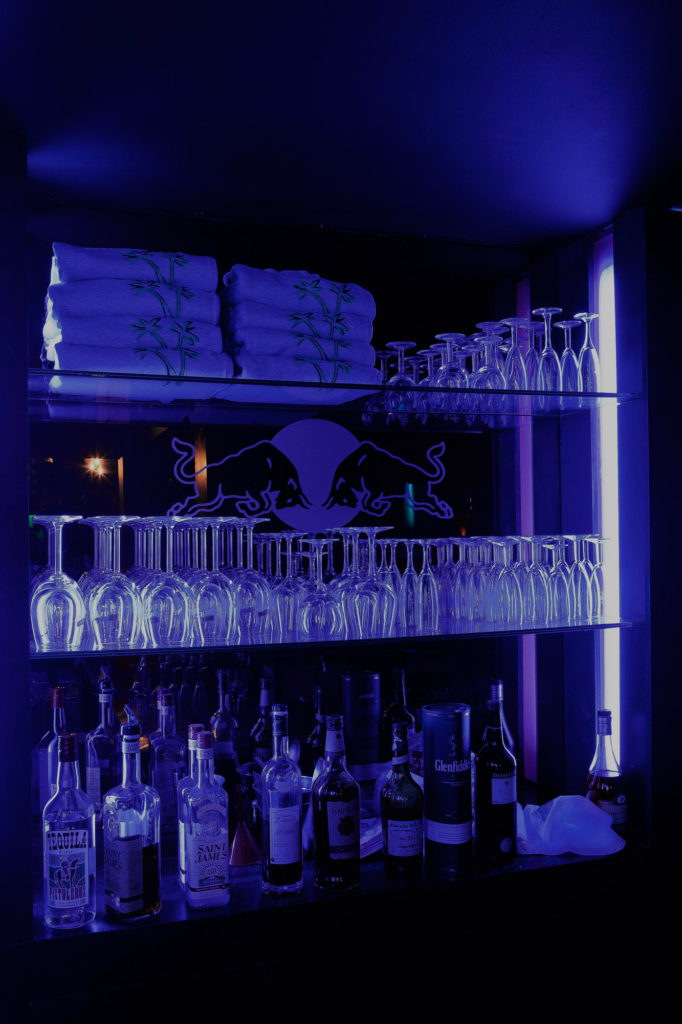
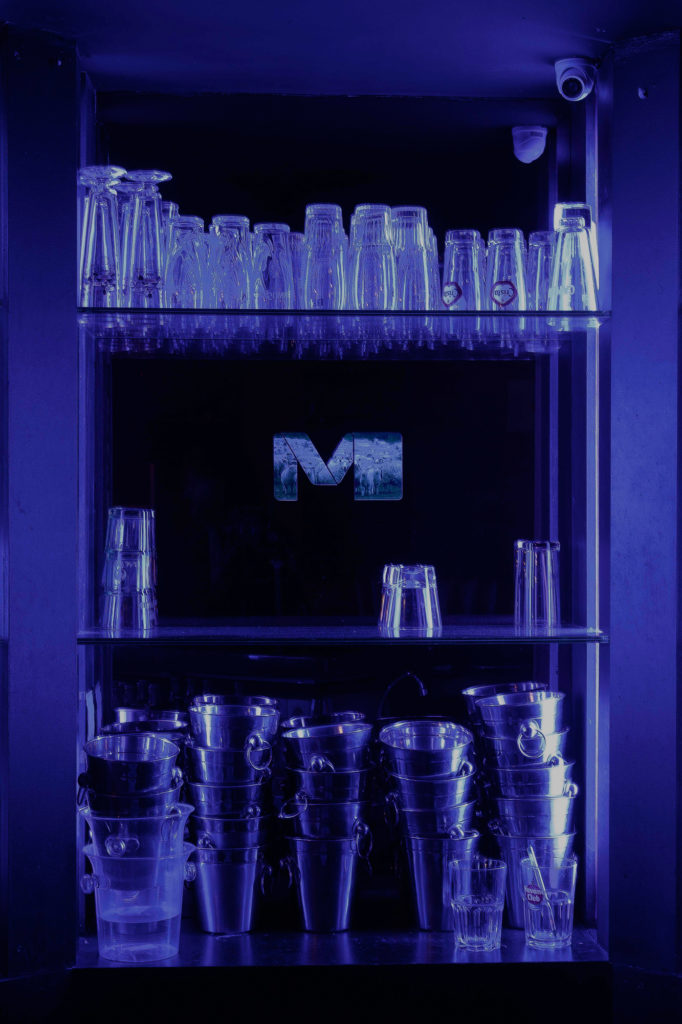
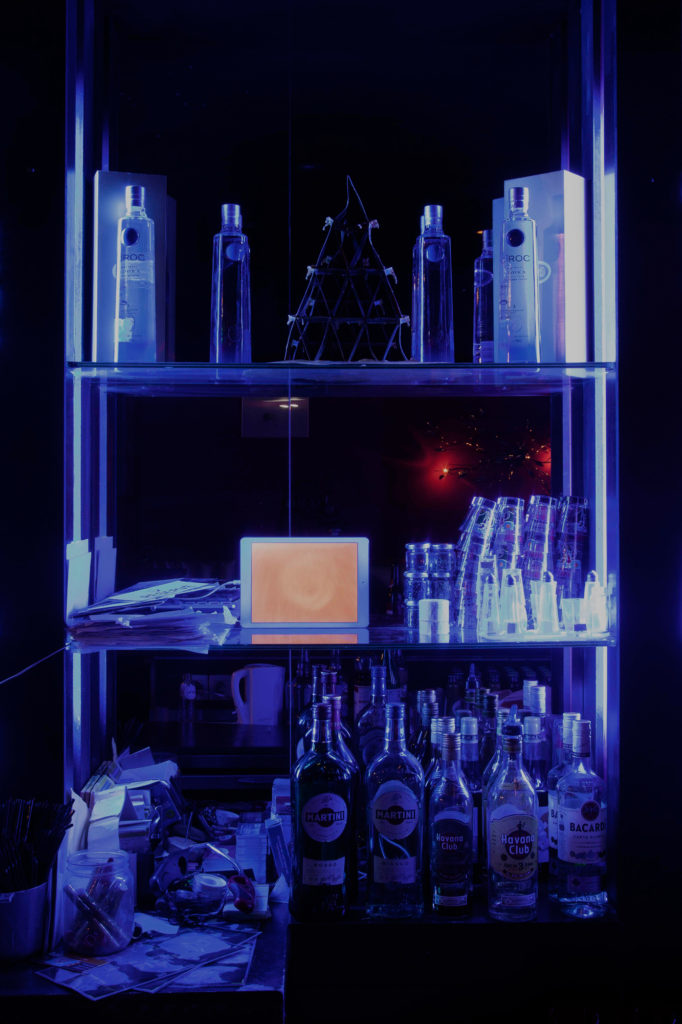
Beyond the artistic contributions, do you see night life itself as a practice?
That sounds like a very romantic strategy. With Cosmopolitanissimo we wanted to explore the potential of a strategy of self-denunciatory design versus self-design as a symbolic sacrifice or suicide. In this contemporary world of a total design or total seduction, ‘the main goal of self-design then becomes one of neutralizing the suspicion of a possible spectator, of creating the sincerity effect that provokes trust in the spectator’s soul’, said Boris Groys. That is why we wanted 1 to collaborate with artists who see misinterpretation as an opportunity for connection, as opposed to seeking refuge in communities of sameness and comfort.
We wanted to see if we could come up with a layout that was ‘emphatically populist’, while refusing the populist ideal, as a way to dismiss ‘the utility of trends in artistic fashion’
How do the questions of authenticity and progress tie into that?
Take for example the design of the website page. We wanted to see if we could come up with a layout that was ‘emphatically populist’, while refusing the populist ideal, as a way to dismiss ‘the utility of trends in artistic fashion’—to use the words of art critic Christopher Night. 2 We were interested in a design that is ‘adamantly anti-idealistic’ and ’embraces all those quietly horrific feelings one has gone to great if unwitting lengths to repress from memory.’ We wanted to transform ‘grinding aggravations into small pleasures, and small pleasures into big ones.’
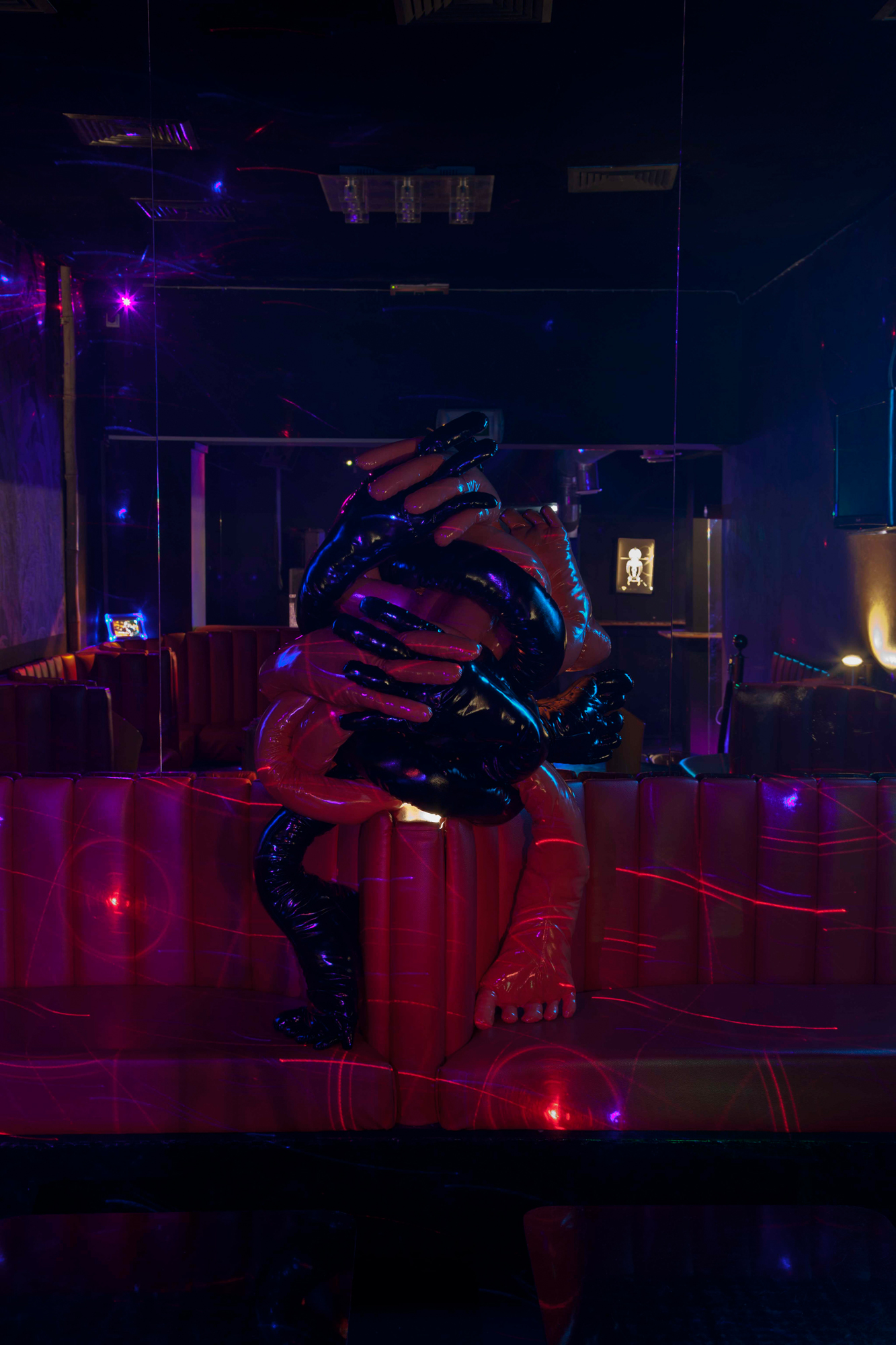
You photographed the exhibition without people present. Why is that?
We felt that using party pictures would misrepresent the true spirit of Cosmopolitanissmo. However Cosmopolitanissimo is definitely people people, it’s a way of life, it’s a feeling but it’s also vampires and gossip. That is why we invited Toxick Gringo to witness the night and reflect on it via a gossip column. The column also features a series of reportage drawings by Jacob Blandy. All of this can be found on our website at cosmopolitanissimo.be.
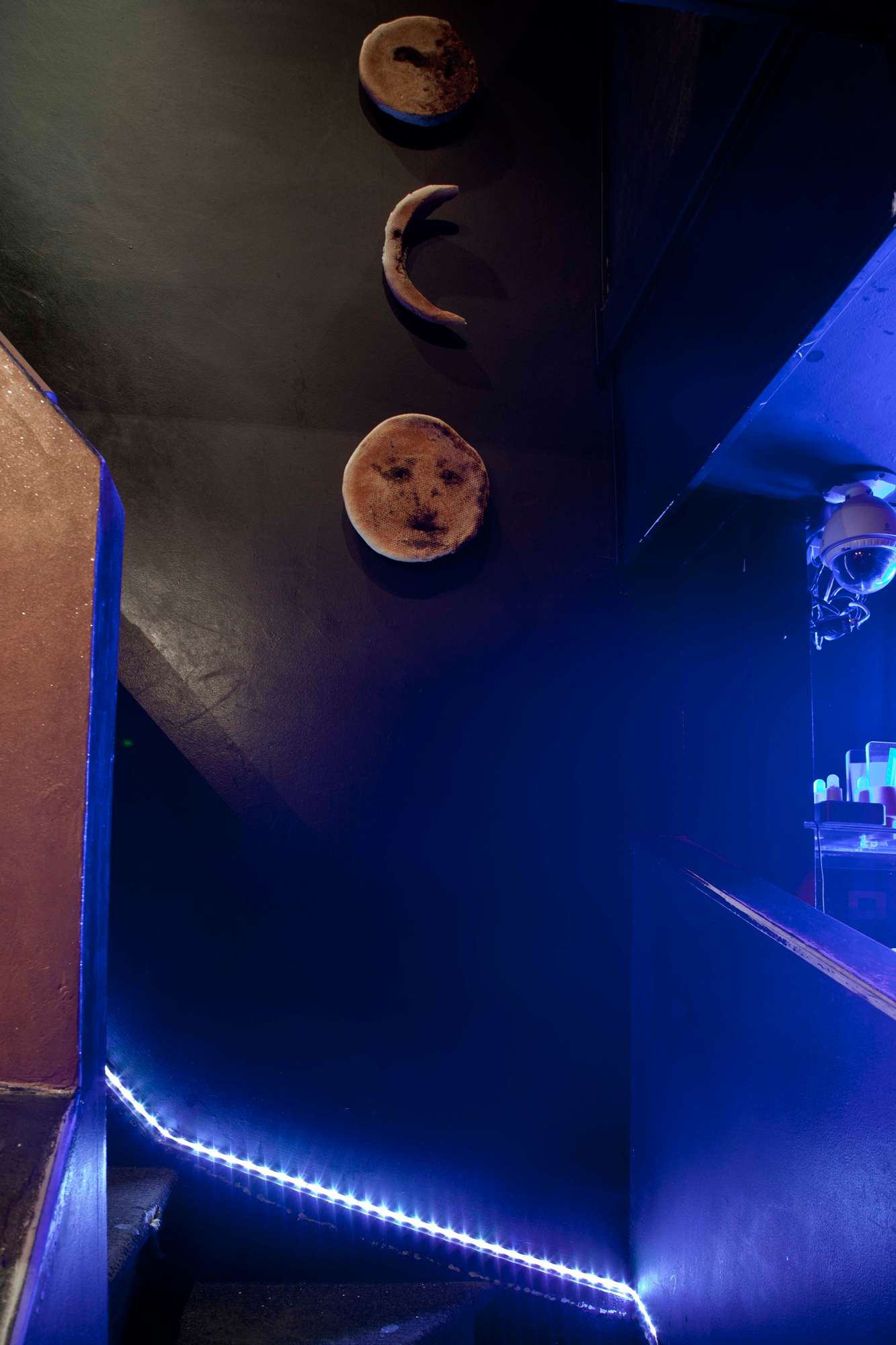
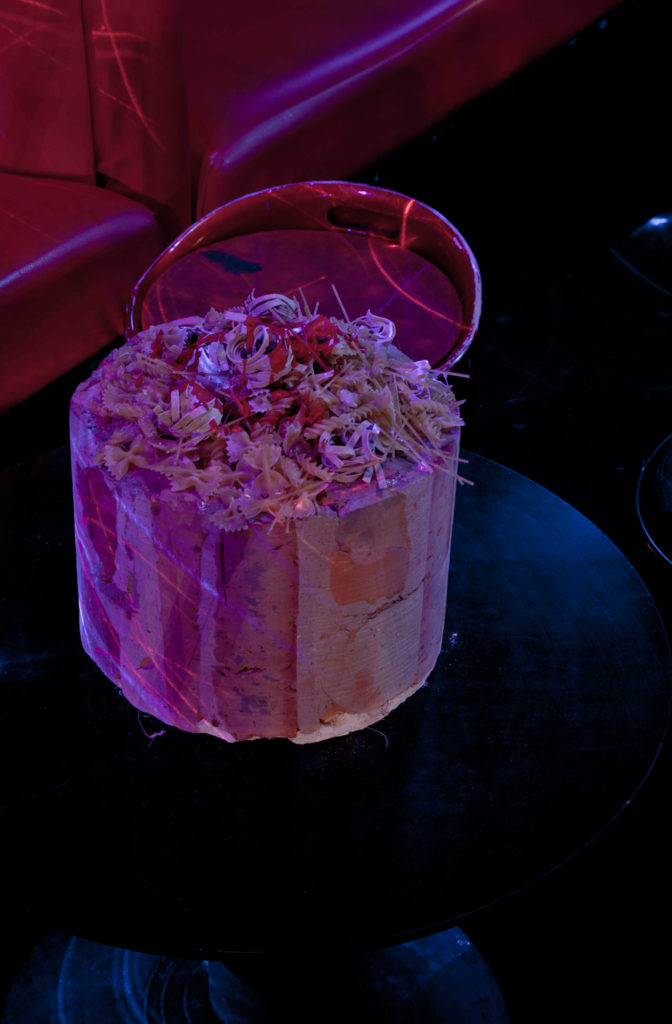
The most cosmopolitan club in Brussels, conveniently located in the uptown neighborhood of the city is called ‘Jimmy Hoo’. It’s officially the go-to venue for any nightlife enthusiast! Jimmy Hoo is famous for it’s in-house restaurant, it’s inviting management, and rotating line-up of crowd pleasing variety DJ’s that keeps the clubbers jamming all through the night with the best of Disco, R&B, Soul, Hip-Hop, and Funk.
On Thursday the 14th of December at 8 pm a one night exhibition opened in ‘Le Hall D’entrée, Le Fumoir, Le Vestiaire, Le Club, Le Bar, Le V.I.P., La cage d’escalier et Les Toilettes’. The name of the exhibition is ‘Cosmopolitanissimo’ and the entrance was free. The exhibition raises questions about the value of authenticity in relation to progress and art’s social role. What was provincial yesterday? What is authentic now? What will be Cosmopolitan tomorrow? ‘Cosmopolitanissimo’ researches the potential of the strategy of selfdenunciatory design versus self-design as selfsacrifice.
